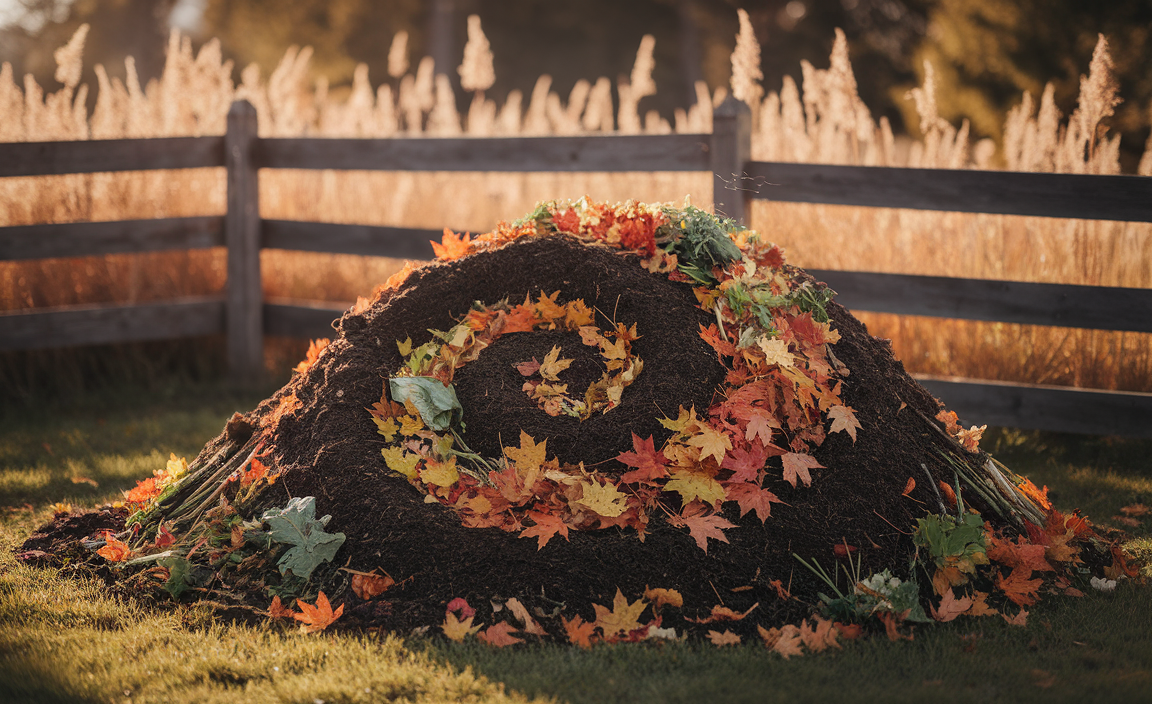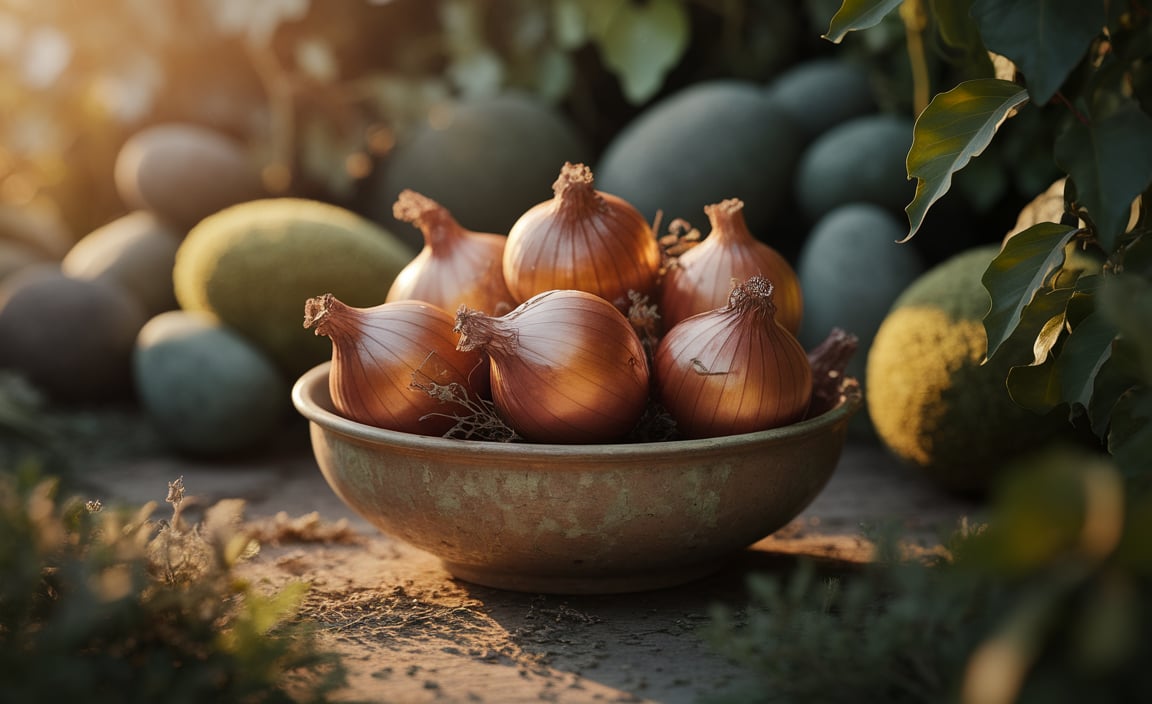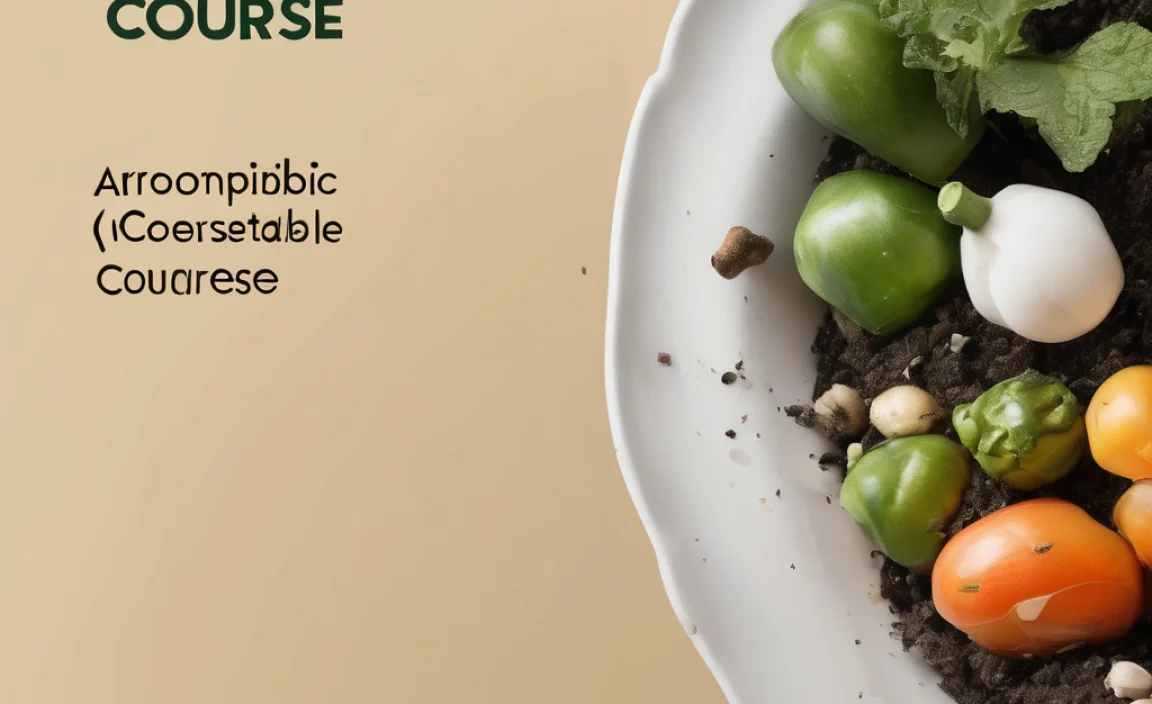Hey there, fellow home enthusiasts! Ever find yourself with a pile of onion skins after cooking and wonder, “Can these really go in the compost?” It’s a common question, and the answer is a resounding YES! Many folks toss them, thinking they’re wasteful, but they’re actually fantastic for your compost bin. Let’s dive in and learn how to turn those papery peels into garden gold, effortlessly.

Why Compost Onion Skins? They’re More Than Just Peels!
You might be surprised to learn just how beneficial onion skins are for your compost pile. They’re not just kitchen scraps; they’re tiny powerhouses of nutrients!

Nutrient Powerhouses
Onion skins are rich in essential minerals like calcium, magnesium, and potassium. When they break down, they release these nutrients, which are vital for healthy plant growth. Think of them as a natural, free fertilizer boost for your garden!
Improved Soil Structure
As the skins decompose, they add organic matter to your compost. This organic matter is key to improving soil texture, helping it retain moisture and allowing for better air circulation. Healthy soil means healthier, happier plants.
Natural Pest Deterrent
Some gardeners believe that the compounds in onion skins can help deter certain garden pests when composted and added to the soil. While not a magic bullet, it’s an added bonus that can contribute to a more resilient garden ecosystem.
Reducing Food Waste
Composting is one of the best ways to reduce the amount of waste going to landfills. By composting your onion skins, you’re actively participating in a sustainable practice that benefits your home and the environment.
Are There Any Downsides? (Spoiler: Not Really!)
Honestly, the downsides to composting onion skins are minimal, especially if you’re following good composting practices. Some beginners worry about a few things, but we can easily address those.
One common concern is attracting pests. While any food scrap can potentially attract critters, onion skins, being relatively dry and papery, are less likely to cause issues than wetter food scraps. The key is to manage your compost pile correctly, ensuring good aeration and balance.
Another thought might be about smell. Again, when properly composted, onion skins won’t contribute to foul odors. In fact, a well-maintained compost pile should smell earthy, not like rotting food. This is achieved by balancing your “greens” (like veggie scraps) and “browns” (like dried leaves).
Getting Started: What You’ll Need (Spoiler: Not Much!)
The beauty of composting onion skins is that you don’t need fancy equipment. You likely already have what you need or can get it very affordably.
Essential “Tools”
Onion Skins: Of course! Save them from your cooking.
A Compost Bin or Pile: This could be a store-bought tumbler, a wooden pallet bin, or even just a well-defined heap in a corner of your yard. If you’re in an apartment, a small indoor worm bin (vermicomposter) can even handle them. Many excellent guides on DIY compost bins are available, like those from the EPA’s composting resources.
“Greens” and “Browns”: These are the building blocks of great compost. Onion skins are considered “greens” (nitrogen-rich). You’ll need to balance them with “browns” (carbon-rich materials) like dried leaves, shredded newspaper, or cardboard.
Water: Your compost pile needs to be about as damp as a wrung-out sponge.
* A Pitchfork or Aeration Tool (Optional but helpful): For turning and mixing your compost.
What to Collect for Your Compost Pile
To give you a better idea of what complements onion skins, here’s a quick rundown of common compostable materials:

- Greens (Nitrogen-rich):
- Fruit and vegetable scraps (including onion skins!)
- Coffee grounds and tea bags
- Grass clippings
- Eggshells (crushed)
- Browns (Carbon-rich):
- Dried leaves
- Shredded newspaper and cardboard (ink-free is best)
- Straw or hay
- Wood chips or sawdust (in moderation)
- Paper towels and napkins (used for non-greasy cleanups)
Knowing this balance will help you create a healthy compost environment where your onion skins will break down quickly and efficiently.
Step-by-Step – How to Compost Onion Skins Effortlessly
Composting onion skins is straightforward. Follow these simple steps, and you’ll be on your way to rich, dark compost.

Step 1: Collect Your Onion Skins
As you cook, collect the papery skins from onions, shallots, and garlic. It’s a good idea to have a small container or bag in your kitchen specifically for compostable scraps. You can even designate a specific spot for onion skins. Don’t worry about rinsing them; the small amount of dirt on them is actually beneficial for your compost!
Step 2: Find a Suitable Location for Your Compost Bin
Choose a spot that’s easily accessible but perhaps not right next to your patio furniture! Most compost bins do best with a bit of sun to help with warmth, but partial shade is fine too. Ensure there’s good drainage so your bin doesn’t get waterlogged. If you’re building a bin, placing it directly on bare earth allows beneficial organisms like worms to enter.
Step 3: Start Layering Your Compost
This is where the magic happens. Aim for a good mix of greens and browns. A general rule of thumb is to have roughly two to three times more browns than greens by volume. So, if you add a layer of onion skins (a green), cover it generously with a layer of dried leaves or shredded cardboard (browns).
Why layer? This layering helps maintain the right balance of air and moisture, preventing the pile from becoming too wet and smelly (anaerobic) or too dry and inactive.
Step 4: Add Onion Skins to the Mix
Simply add your collected onion skins to the compost bin. If you have a lot, you can add them in a layer. Remember to always cover them with a layer of brown materials. This is the most crucial step to ensure easy composting.
Pro Tip: If your onion skins are particularly large or you’re concerned about them clumping, you can give them a quick tear or chop, but it’s usually not necessary.

Step 5: Maintain Moisture Levels
Your compost pile should feel like a damp sponge. If it’s too dry, the decomposition process will slow down. If it’s too wet, it can become slimy and smelly. You’ll likely need to add water occasionally, especially during dry spells. If you live in a rainy climate, you might need to cover your bin or add extra brown materials to absorb excess moisture.
Step 6: Aerate Your Compost (Turn It!)
Turning your compost pile regularly (every week or two is great, but even once a month helps!) is key to speeding up decomposition and ensuring the right conditions. Use a pitchfork or a specialized compost aerator to mix the materials, introducing oxygen and helping everything break down evenly.
Why is aeration important? Microorganisms that break down organic matter need oxygen to thrive. Without it, the pile can become anaerobic, leading to slow decomposition and unpleasant odors. Tools like this compost aerator can make the job much easier.
Step 7: Wait for Compost to Mature
This is the part that requires a little patience! Depending on your climate, the materials you add, and how often you turn your pile, compost can mature anywhere from a few months to a year. You’ll know it’s ready when it’s dark, crumbly, and smells earthy. You shouldn’t be able to identify individual ingredients like the onion skins anymore.
Factors Affecting Composting Speed
Several factors influence how quickly your onion skins (and everything else) will break down. Understanding these can help you optimize your composting efforts.
Temperature
Warmer temperatures generally speed up decomposition. A compost pile that heats up properly (often reaching 130-160°F or 55-70°C in the center) will break down materials much faster. This is why a sunny spot can be beneficial.
Moisture
As mentioned, the ideal moisture level is crucial. Too dry, and the microbes go dormant. Too wet, and they can’t get enough oxygen.
Aeration
Regular turning or mixing provides essential oxygen for aerobic decomposition, which is the fastest and least smelly method.
Particle Size
Smaller pieces of organic matter have more surface area for microbes to work on. While onion skins break down readily, larger items like whole branches would take much longer unless chopped.
Balance of Greens and Browns
The C:N ratio (carbon-to-nitrogen) is critical. A good balance ensures that the microbes have the energy (carbon) and protein (nitrogen) they need to multiply and do their work effectively. Onion skins are nitrogen-rich (greens), so they need plenty of carbon-rich brown materials to balance them out.
Composting Onion Skins in Different Systems
Not everyone has the same setup for composting. Fortunately, onion skins are adaptable!
Open Piles
If you have the space, a simple open pile is a classic method. Just keep layering your materials and turning them as needed. Onion skins integrate well here, provided you cover them with browns.
Compost Bins and Tumblers
These enclosed systems are tidy and can speed up the process. Tumblers, in particular, make turning very easy. Just toss your onion skins in, ensuring they get mixed with other materials. The enclosed nature helps retain heat and moisture, aiding decomposition.
Worm Bins (Vermicomposting)
Can onion skins go in a worm bin? Yes, but with caution. Worms don’t particularly like very acidic or spicy foods, and onion skins can sometimes deter them if added in large quantities. It’s best to add them sparingly and in small pieces, and always bury them under the bedding material. They can also be “pre-composted” partially in your main compost pile before adding to a worm bin, which helps break them down further. For more on worm bin composting, the EarthEasy guide to vermicomposting is excellent.
Bokashi Composting
Bokashi is a fermentation process that can handle almost all food scraps, including onion skins. It’s an anaerobic (without oxygen) process that pickles your waste. The fermented material then needs to be buried in soil or added to a traditional compost pile to finish decomposing. Onion skins are perfectly suited for Bokashi.
Troubleshooting Common Onion Skin Composting Issues
While generally hassle-free, you might encounter minor hiccups. Here’s how to solve them.
Issue: My compost pile smells bad (like ammonia or rotten eggs).
Cause: Too many “greens” (nitrogen-rich materials like onion skins) and not enough “browns” (carbon-rich materials), or the pile is too wet, leading to anaerobic conditions.
Solution: Add a generous layer of brown materials (dried leaves, shredded cardboard). Turn the pile thoroughly to introduce air. If it’s too wet, bury some dry brown material within the pile.
Issue: The onion skins aren’t breaking down.
Cause: The pile might be too dry, too cold, or lacking microbial activity.
Solution: Add water and ensure the pile is about as damp as a wrung-out sponge. Turn the pile to aerate it. If you’ve added them in very large pieces, you can try chopping them up a bit more next time, though usually, it’s not needed.
Issue: I’m worried about attracting pests.
Cause: Exposed food scraps can attract rodents or insects.
Solution: Always bury your onion skins (and other kitchen scraps) under a layer of brown materials. Ensure your compost bin is well-maintained and doesn’t have large holes where pests can easily enter.
A Quick Comparison: Onion Skins vs. Other Kitchen Scraps
It’s helpful to see how onion skins stack up against other common kitchen items when it comes to composting.
| Compostable Item | Category | Breakdown Speed | Notes |
|---|---|---|---|
| Onion Skins | Green (Nitrogen) | Medium | Excellent source of nutrients. Can be added sparingly to worm bins. |
| Coffee Grounds | Green (Nitrogen) | Fast | Adds nitrogen and improves texture. Good for all compost systems. |
| Eggshells (crushed) | Green (Nitrogen) | Slow | Adds calcium. Must be crushed well to break down. |
| Banana Peels | Green (Nitrogen) | Medium | Adds potassium. Can attract fruit flies if not buried. |
| Citrus Peels (lemon, orange) | Green (Nitrogen) | Medium-Slow | Can inhibit microbial activity if added in large quantities due to acidity. Best in traditional compost. |
| Cooked Pasta/Rice | Green (Nitrogen) | Fast | Can mold and attract pests if not managed well. Add in moderation. |
| Meat, Dairy, Oils | Not Recommended | N/A | Can cause odors, attract pests, and introduce pathogens. Avoid in home compost unless using specialized systems (e.g., Bokashi). |
As you can see, onion skins are quite easy to manage. Their primary benefit is their nutrient contribution and how readily they break down when mixed correctly with browns.
FAQ: Your Onion Skin Composting Questions Answered
Q1: Can I put ALL onion skins in my compost?
A1: Yes! Whether they’re from white, yellow, or red onions, all onion skins are great for composting. Even the dry, papery outer layers are beneficial.
Q2: Will composting onion skins make my compost smell bad?
A2: Not if you manage your compost properly. Always cover onion skins with a layer of brown material (like dried leaves or shredded paper) to prevent odors and deter pests.
Q3: How much of my compost should be onion skins?
A3: Onion skins are “green” materials, rich in nitrogen. Aim for a balance in your compost pile, with browns (carbon) outweighing greens (nitrogen) by about 2-3 times. So, use onion skins in moderation as part of your kitchen scrap collection!
Q4: Do I need to chop up the onion skins?
A4: It’s usually not necessary. They break down quite readily on their own. If you have very large ones, a quick tear might help, but don’t overthink it.
Q5: Can I compost garlic skins too?
A5: Absolutely! Garlic skins are very similar to onion skins and break down just as well in a compost pile. They also contribute valuable nutrients.
Q6: How long does it take for onion skins to decompose?
A6: In a well-managed, active compost pile, onion skins usually break down within a few weeks to a couple of months, becoming indistinguishable from the rest of the compost.
Q7: Is composting onion skins good for my garden soil?
A7: Yes! As they decompose, onion skins release essential minerals like potassium, calcium, and magnesium, enriching your soil and promoting healthier plant growth.
These FAQs cover the main concerns beginners often have. Remember, composting is a natural process, and your compost pile is resilient!
Conclusion: Effortless Gardening Gold from Your Kitchen
See? Composting onion skins is not only possible but incredibly easy and beneficial. You’re not just throwing away scraps; you’re creating nutrient-rich compost that will nourish your garden for seasons to come. By following these simple steps—collecting, layering with browns, maintaining moisture, and aerating—you’ll transform what was once kitchen waste into a valuable resource. Happy composting, and enjoy the fruits (and vegetables!) of your labor!

I am passionate about home engineering. I specialize in designing, installing, and maintaining heating, ventilation, and air conditioning systems. My goal is to help people stay comfortable in their homes all year long.

